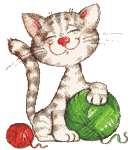What is Soil?
Soil is a mixture of living things and non-living things. Soil commonly referred to as dirt and also known to us as earth. It provides plants and animals with water, air, food and nutrients.
Soil contains living things and non-living things.
The non-living things in the soil are stones, sand, silt and clay.
Soils also contains bits of dead plants and animals.
Among the living things found in soil are earthworms and ants.
There are different types of soil. For examples, sandy soil, clay soil and garden soil.
Sandy soil is usually yellowish in colour. It has very little bits of dead plants and animals.
Clay soil is red, brown or grey. It is a soil which has a heavy concentration of clay particles.
Garden soil is black or brown in colour. It has lots of bits of dead plants and animals.
Soil is made up different layers. How do these layers look like? Below is an example of the layers formed when we mix the soil with water.
There are bits of dead plants and animals floating in the water.
Clay, silt and sand are in the middle layers.
Small stones are found at the bottom layer because they are the heaviest objects.
EXERCISE
True or False
1. Garden soil lets water to flow through well. [______]
2. Sandy soil does not let water to flow through easily. [______]
3. Sandy soil lets water to flow through very well. [______]
4. Sandy soil holds a lot of water. [______]
5. Clay soil lets water to flow through very easily. [______]
6. Clay soil holds a lot of water. [______]
7. Garden soil does not allow water to flow through it. [______]
Answer: 1.True 2.False 3.True 4.False 5.False 6.True 7.False









 Facebook :
Facebook : 


